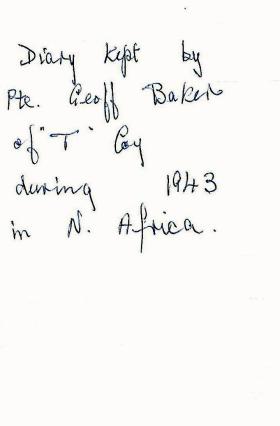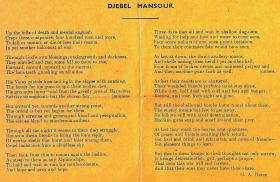Djebel Alliliga is a battle honour of The Parachute Regiment and took place in North Africa in February 1943, during Operation Torch. It is also known as the Battle of Mansour.
Djebel Mansour, which is adjacent to Djebel Alliliga, is a hill feature about twenty miles south-west of Pont du Fahs that overlooks the road to Tunis. The peak is approximately 2000 feet above sea level. Mansour was also known as Hill 648.
The battle was one of a series of actions mounted by the Allies to secure vital passes through the mountain range running parallel with the Axis supply line along the Tunisian coast.
The Germans occupied fortified positions on Mansour and Alliliga. The 1st Parachute Battalion and an attached company from the French Foreign Legion were tasked with attacking the German positions and securing Mansour.
The battalion’s commanding officer, Lt Col Pearson, ordered a two platoon fighting reconnaissance patrol to assess Djebel Mansour’s defences. The men arrived at the base of Mansour at 03:00 hrs on 31 January without incident. After ascending the steep incline, the patrol encountered enemy defensive positions near the top and secured 14 prisoners before withdrawing back to Allied positions under heavy fire.
The main battalion assault went in at 05:00 hrs on 3 February 1943. It is believed that an enemy patrol moved the guide tape laid out on S Company’s route to the start line and as a result it suffered heavy losses after venturing into a minefield covered by machine guns firing on fixed lines. Notwithstanding this mishap the impetus of the battalion assault never faltered and the enemy positions were overrun with fixed bayonets.
The French Foreign Legion also secured the neighbouring hill 646.
R and T Coys proceeded to overrun the enemy positions on Alliliga, while S Coy remained on Mansour. However, the Germans mounted a prompt counter attack forcing the 1st Para Bn to consolidate on Mansour.
The 3rd Bn Grenadier Guards mounted an unsuccessful attack to re-take Alliliga on 4 February and in addition a German counter attack on Hill 646 dislodged the French Foreign Legion.
As a result the Germans were able to bring relentless artillery and heavy machine gun fire to bear on the British Paras dug into Mansour inflicting further casualties on the beleagured battalion. To make matters worse they were also subjected to Stuka dive bomber attacks.
The Germans mounted a further counter attack against the 1st Para Bn on the morning of 5 February. By 10.00 hrs S Coy was completely out of ammunition with R and T Coys down to one hundred rounds each.
The position was untenable with no re-supply, no effective artillery support, and no air cover. Lt Col Pearson was granted permission to withdraw. What remained of the battalion retired down the mountain paths under a constant barrage of shell and small arms fire, worn out and ravenously hungry.
The battalion paid a high price for the battle with around 45 killed and 130 wounded.







Latest Comments
There are currently no comments for this content.
Add Comment
In order to add comments you must be registered with ParaData.
If you are currently a ParaData member please login.
If you are not currently a ParaData member but wish to get involved please register.